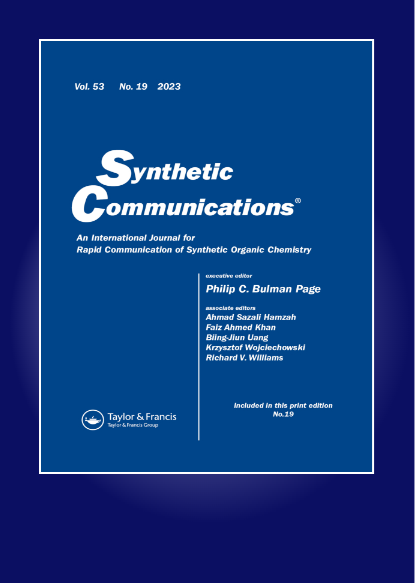Indane-1,3-dione: Versatile precursor for the microwave-assisted synthesis of annulated and spiro-molecular systems
IF 1.8
3区 化学
Q3 CHEMISTRY, ORGANIC
引用次数: 0
Abstract
Microwaves are a type of electromagnetic radiation that, when used in chemical reactions, offer a number of advantages, including energy efficiency, reduced reaction time, higher synthesis rate, reduced by-products, well-defined final products, high purity, and improved physicochemical properties. Therefore, microwaves have been widely used in both organic and inorganic synthesis. Cyclic 1,3-diketones are versatile precursors that could be used to prepare diverse molecular systems. Among them, indane-1,3-dione has been widely used to prepare diverse indeno-fused heterocycles and spiro-heterocyclic derivatives that demonstrated numerous biological applications. This review includes a survey of the available reports where indane-1,3-dione is annulated, resulting in heterocycles with bi-, tri-, tetra-, and pentacyclic rings under microwave irradiation. Moreover, the review investigates the utility of microwave-assisted reactions in the synthesis of indanone-based, spiro-molecular systems. The mechanistic postulates of some complex procedures are highlighted. Some comments are added to highlight the biological applications of the indeno-fused products.
吲哚-1,3-二酮:微波辅助合成环状和螺旋分子体系的多功能前体
微波是一种电磁辐射,当用于化学反应时,具有许多优点,包括能源效率,缩短反应时间,提高合成速度,减少副产物,明确的最终产物,高纯度和改进的物理化学性质。因此,微波在有机和无机合成中得到了广泛的应用。环1,3-二酮是一种用途广泛的前体,可用于制备多种分子体系。其中,茚-1,3-二酮已被广泛用于制备各种茚融合杂环和螺杂环衍生物,具有广泛的生物学应用。这篇综述包括对现有报道的综述,其中在微波照射下,茚-1,3-二酮环化,产生具有双环、三环、四环和五环的杂环。此外,本文还研究了微波辅助反应在合成吲哚酮基螺旋分子体系中的应用。强调了一些复杂程序的机制假设。文中还介绍了铟熔产物的生物学应用。
本文章由计算机程序翻译,如有差异,请以英文原文为准。
求助全文
约1分钟内获得全文
求助全文
来源期刊

Synthetic Communications
化学-有机化学
CiteScore
4.40
自引率
4.80%
发文量
156
审稿时长
4.3 months
期刊介绍:
Synthetic Communications presents communications describing new methods, reagents, and other synthetic work pertaining to organic chemistry with sufficient experimental detail to permit reported reactions to be repeated by a chemist reasonably skilled in the art. In addition, the Journal features short, focused review articles discussing topics within its remit of synthetic organic chemistry.
 求助内容:
求助内容: 应助结果提醒方式:
应助结果提醒方式:


